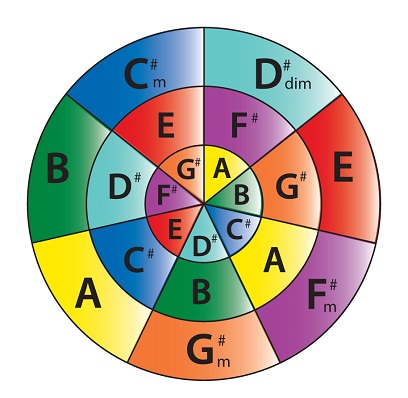
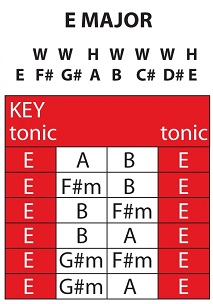
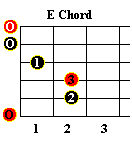 |
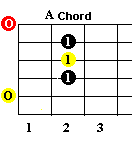 |
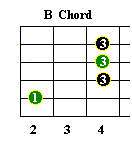 |
 |
| Listen to this progression: E A B E | |
| Strum these chords over the E major scale and see how they harmonize nicely. |
 |
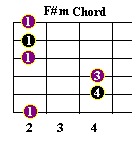 |
 |
 |
 |
 |
 |
 |
 |
 |
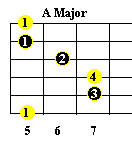 |
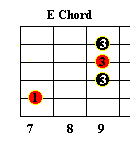 |
| Listen to this progression: E B A E |
 |
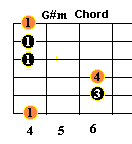 |
 |
 |
 |
 |
 |
 |

The illustration above shows the notes for the E major pentatonic scale and the C# minor pentatonic scale. C# minor is the relative minor to the key of E major. This means they share the same key signature and notes. The area in red illustrates the E major pentatonic scale and the area in blue outlines the C# minor pentatonic scale. Check out some C# minor progressions.
| Practice the E major scale. | |
| Practice the E major pentatonic scale and exercises. | |
| Convert all the A scales illustrated to E scales. This can be accomplished by moving all the A fingerings to E fingerings. Or all the positions from the 5th fret to the 12 fret or in the open position. Remember all notes repeat after 12 frets. |
Good Luck,
From the jam room








